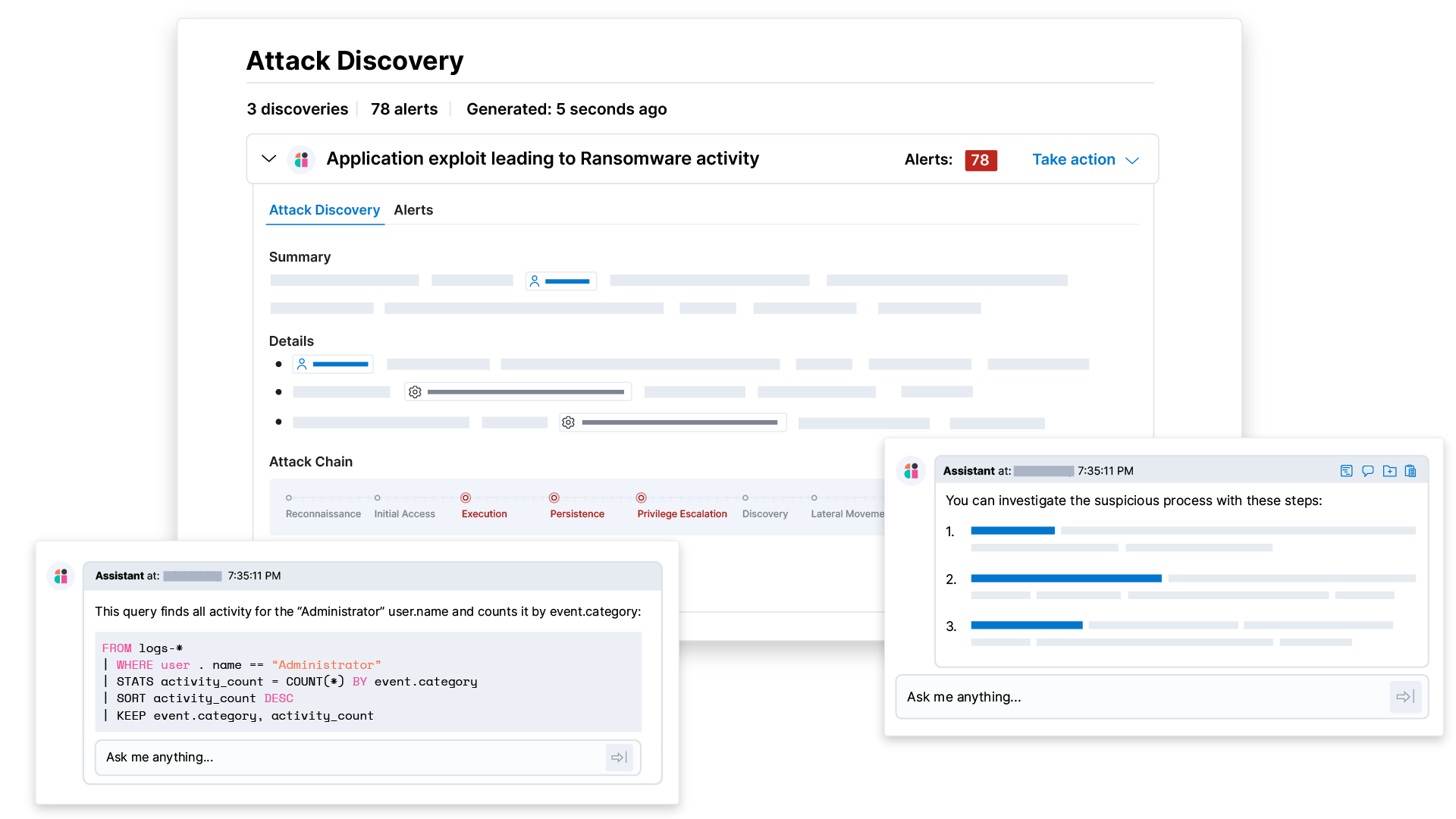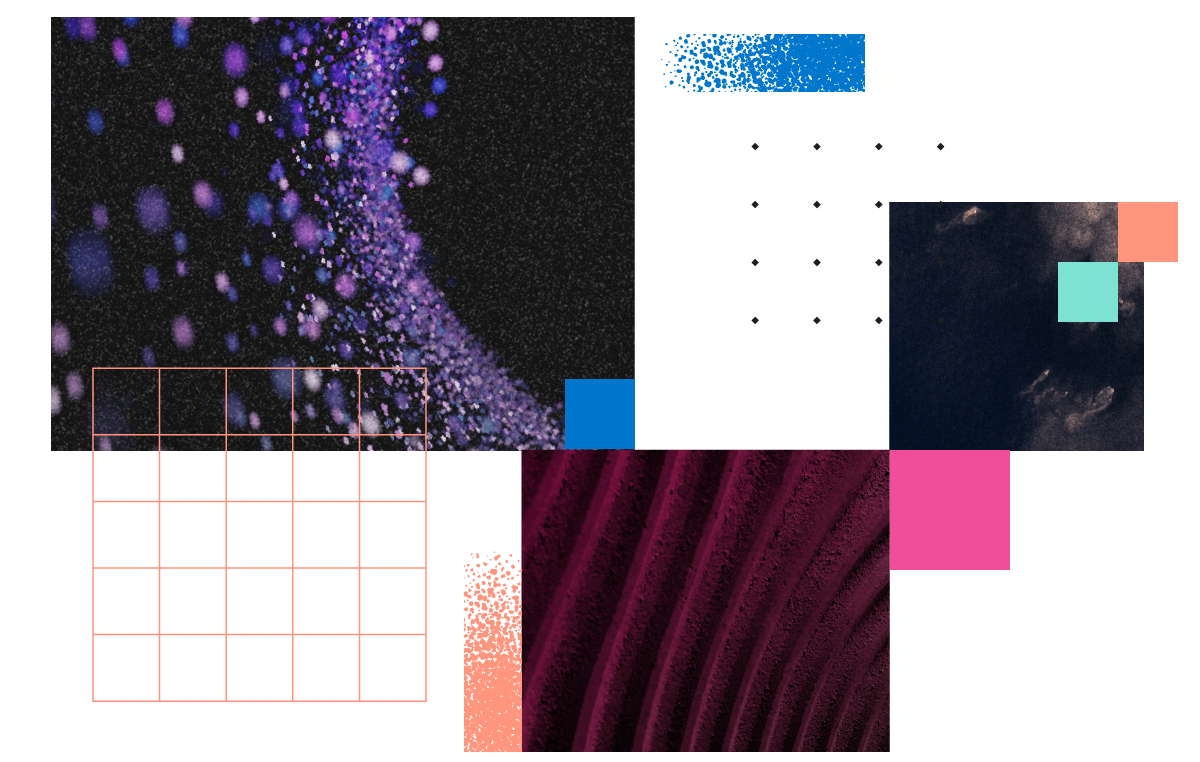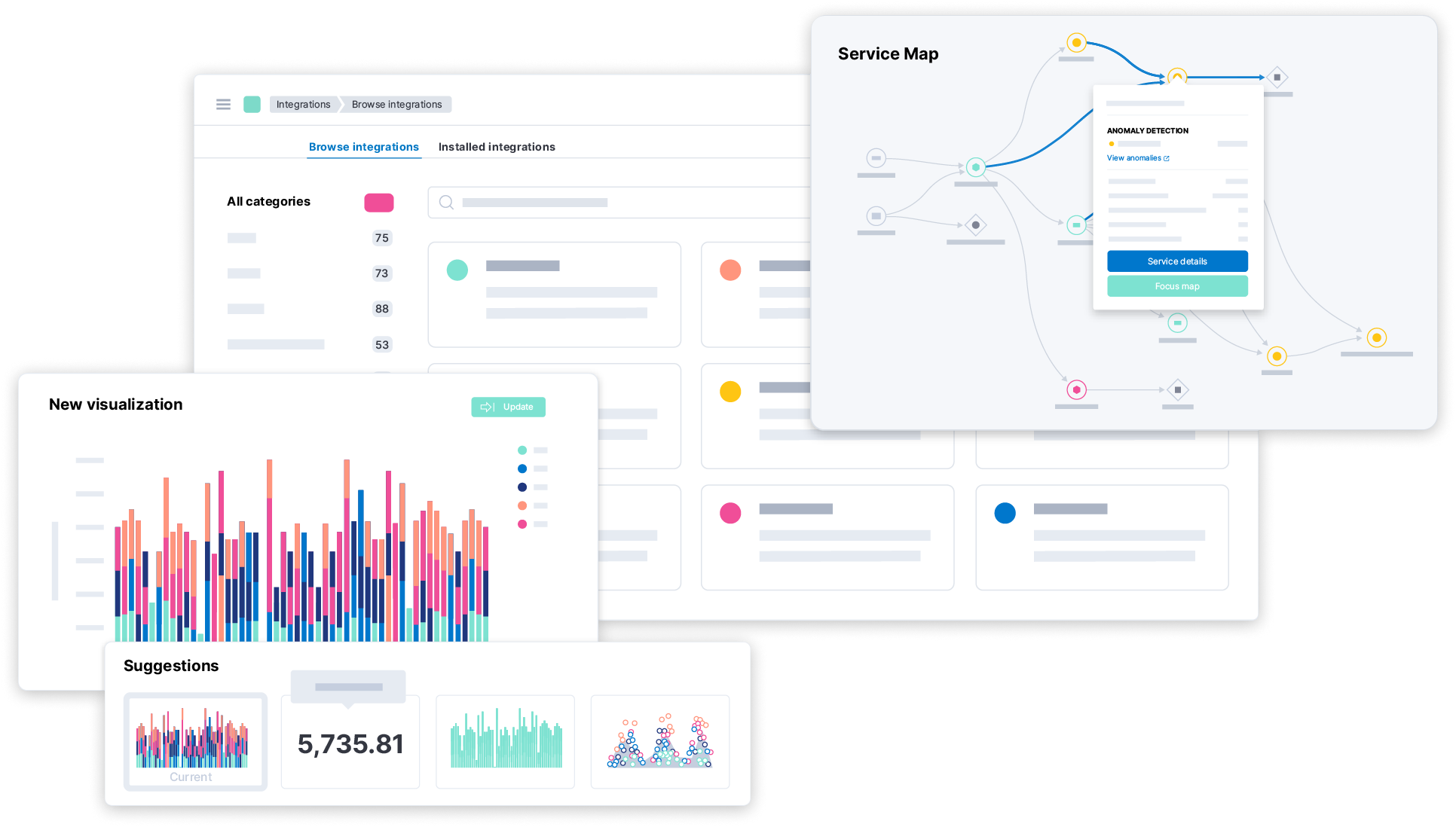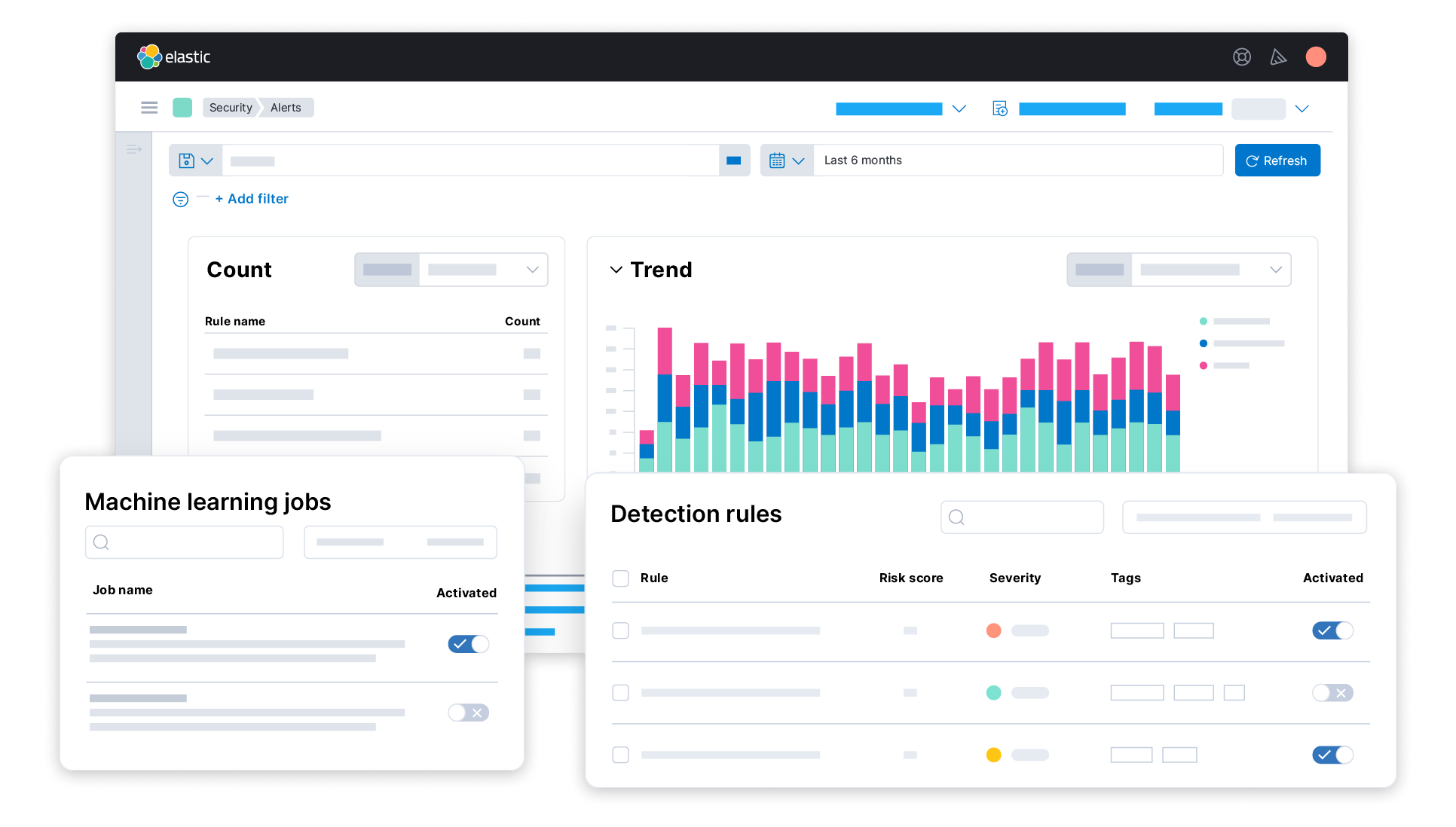

Elastic Security
Modernize SecOps with AI-driven security analytics
Address complex threats with Elastic Security, powered by the Elastic Search AI Platform.

CAPABILITIES
Security for the AI era



SIEM
Empower your SOC
SIEM, simplifiedResist advancing threats with AI-driven security analytics, the future of SIEM.
AI for Security Operations
Work smarter with AI
AI for SecOpsDetect sooner, investigate faster, and respond decisively, with the Elastic Search AI Platform.
Threat research
Fueled by Elastic Security Labs
Explore threat researchApply novel research on threats, malware, and protections from our expert security researchers.



Use Cases
Achieve your mission
Tackle your SecOps use cases with Elastic Security, built on open source Elasticsearch.


Continuous monitoring
Gain visibility across your attack surface
Discover continuous monitoringCollect and normalize data of any kind — cloud, user, network, you name it. Explore data from on-prem and cloud-based infrastructure, all in one place.
Automated threat protection
Stop complex attacks with advanced analytics
Explore automated threat protectionDetect threats across the MITRE ATT&CK® framework. Reveal hidden threats with anomaly detection. Mature SecOps practices to stop threats at unprecedented scale.


See Elastic Security in action
Security teams around the world succeed with Elastic.
Customer spotlight

KPN enhances its security posture and enables business modernization
Customer spotlight
Booking.com secures operations worldwide, protecting travelers
Customer spotlight
Texas A&M reduces response time by 99%
Frequently asked questions
The Elastic Security solution helps teams protect, investigate, and respond to threats before damage is done. On the Elastic Search AI Platform — and fueled by advanced analytics with years of data from across your attack surface — it eliminates data silos, automates prevention and detection, and streamlines investigation and response. Learn how the Elastic Security solution can modernize SecOps at your organization.
Elastic Security is powered by the Elastic Search AI Platform, built on open source Elasticsearch. The solution is free and open, so organizations can get started — and even support core SecOps workflows — at no cost. Learn the power of open security. If you want to try it for yourself, experience a free trial of Elastic Cloud.
If your organization needs a modern SIEM, you may be considering Elastic versus Splunk. Consider your goals: Do you need to achieve visibility across your global environment? Power advanced analytics? Support the hybrid cloud? Retiring Splunk and moving to an open and flexible solution like Elastic can help you transform your security program. Consider 5 signs you need to replace your SIEM.
Search AI Lake enables vast storage and fast search for our serverless offering, enabling your analysts to repel threats and keeping your data secure. The fully managed cloud offering streamlines administration, enabling your SOC to scale defenses effortlessly.






